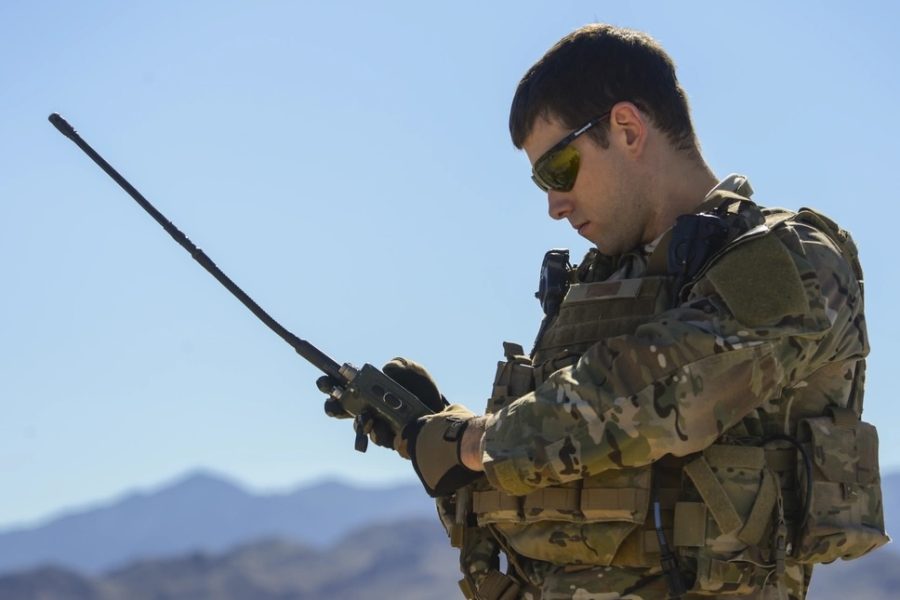After proving last month that the Link 16 data network can broadcast from space to the ground, the director of the Space Development Agency expects to test similar connections for datalinks that are more advanced than the 1980s-era network.
“Link 16 is the one that’s most prolific, but there’s a lot of different tactical datalinks and we want to be able to talk to as many of those as possible,” SDA director Derek Tournear said Dec. 7 in a discussion with the National Security Space Association.
Link 16 is a tactical radio technology that U.S., NATO, and allied nations use to transmit voice, text, and data to friendly forces up to 200 or 300 nautical miles away, Tournear explained. The problem is that in a near-peer conflict, a battle may take place over a larger area. The military is preparing for that possibility with Joint All-Domain Command-and-Control, which aims to “take any and all available sensor data and get it to any and all available shooters as quickly as possible,” Tournear said.
“In order to do that, you have to have a tactical datalink that works essentially globally, it works beyond line-of-sight,” he added.
The test last month involved sending signals to and from low-Earth orbit satellites to ground-based receivers using terrestrial radios, paving the way for beyond-line-of-sight secure communication ability. Despite the results, new datalink systems may be required in a future fight.
“Cool, but Link 16 is a 1980s datalink with limited bandwidth and a very narrow, easily jammable frequency range,” wrote defense newsletter The Merge, founded by former Air Force weapons systems officer Mike Benitez, in reaction to the test. “We hope it’s a placeholder for a better datalink and those satellites are built with that in mind.”

New and improved datalink tests are expected as part of SDA’s tactical satellite communication (TACSATCOM) program, which itself is connected to multiple on-orbit test initiatives, Tournear explained. The initial Link 16 test used three satellites that form part of SDA’s Tranche 0, an initial batch of 28 satellites meant to demonstrate capabilities of the Proliferated Warfighter Space Architecture, a network of hundreds of satellites to be built over the next decade or so that will provide advanced targeting, missile warning and tracking.
The next batch, Tranche 1, begins launching in September and will consist of up to 161 satellites that can be used in real-world operations. One element of the batch is the Tranche 1 Demonstration and Experimentation System (T1DES), a group of satellites that uses beyond-line-of-sight and low latency data transfer to help connect other spacecraft. Tournear said T1DES can serve as a platform for testing new datalinks, and so can Tranche 2 Developmental Experimentation Satellites, where the goal is to demonstrate that the spacecraft constellation can talk to a wide swath of systems.
“We want to test out a wide range of new tactical datalinks, because there are a lot of tactical datalinks that are used,” Tournear said.
Airspace
Last month’s Link 16 was not without friction. An ongoing dispute between the Pentagon and the Federal Aviation Administration meant the test had to take place in the territory of an undisclosed Five Eyes (an intelligence network including the U.S., the U.K., Canada, Australia, and New Zealand) country.
“Our friends at the FAA, their primary concern is to make sure that there is absolutely zero possibility of any kind of risk for commercial air traffic,” Tournear said.
Link 16 shares radio frequency bands with some of the navigation aids used by commercial aircraft, he explained. That means whenever the Department of Defense makes a change to a radio, even if it is just new software, it has to go through a Navy certification process and be approved by the FAA before it can be used over national airspace.
“We have not completed that testing for our radios on orbit yet,” Tournear said. “We’re in the process of doing that. We expect to get those tests completed very quickly and then FAA will allow us to have a temporary frequency authorization over the national airspace.”
The agency had to get a waiver from the National Telecommunications and Information Administration to transmit a Link 16 message to a Five Eyes nation and over international waters, but Tournear hopes to “check the boxes” so that SDA can test datalinks over national airspace in the near future.
